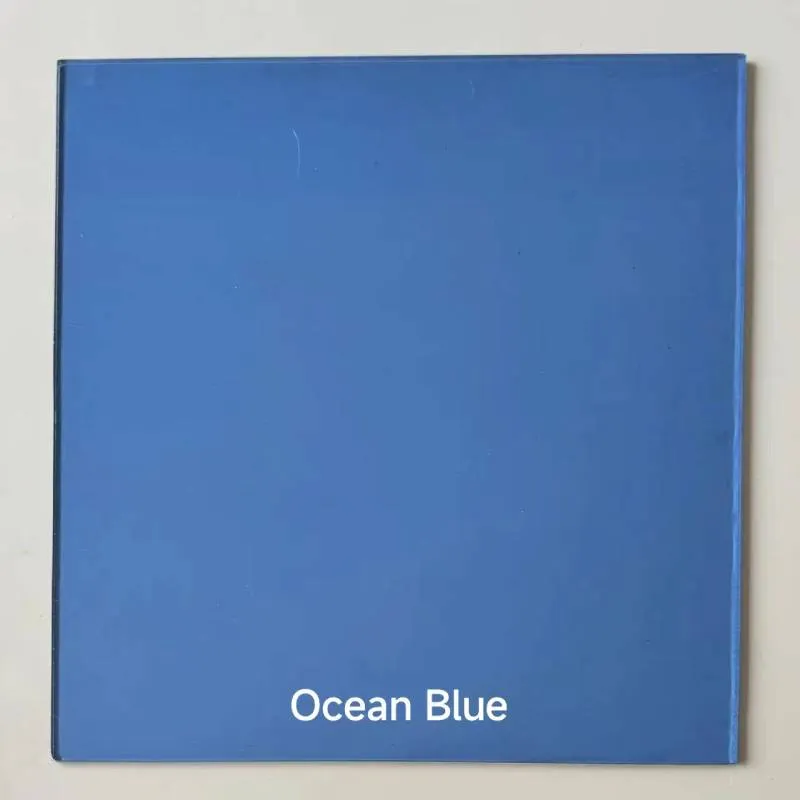

In an era where architectural design meets energy efficiency, reflective glass has emerged as a go-to material for modern building facades. It not only adds a sleek, professional appearance to any structure but also plays a crucial role in regulating internal temperatures. From commercial skyscrapers to private residences in hot climates, the use of reflective glass has skyrocketed due to its exceptional performance in sunlight control and heat insulation. With more consumers exploring options like reflective green glass and comparing the wide types of reflective glass available, this material is proving to be more than just a decorative element—it’s a smart investment in comfort, energy savings, and long-term durability.

When evaluating building materials for energy efficiency, many architects and contractors weigh the benefits of reflective glass against Low-E (low-emissivity) glass. Although both serve to improve energy regulation in buildings, they function quite differently.
Reflective glass is coated with a metallic or oxide layer that reflects a significant portion of visible and infrared light. This mirror-like finish reduces glare and solar heat gain, making it ideal for applications where privacy and heat control are priorities. In contrast, Low-E glass is designed to reflect long-wave infrared energy (heat) while allowing most visible light through, making it better suited for cooler climates or indoor heat retention.
In sun-drenched environments, reflective glass outshines its counterpart. Its visible reflection and high solar reflectance make it particularly effective in hot regions, where it minimizes the need for air conditioning. Plus, the exterior sheen enhances a building’s appearance, creating a uniform, modern facade.
A common misconception is that reflective glass only reduces glare without offering meaningful thermal insulation. However, the opposite is true. By reflecting up to 80% of the sun’s infrared rays, reflective glass significantly reduces interior heat buildup, making indoor spaces cooler and more comfortable.
In climates where the sun blazes for most of the year, this heat-reduction feature can lead to substantial energy savings. Office buildings, shopping malls, and educational institutions that use reflective glass report decreased reliance on HVAC systems, which lowers energy bills and improves environmental impact.
In addition to thermal performance, reflective glass provides strong acoustic insulation, UV blocking, and glare reduction—creating an optimal working or living environment. This makes it not only energy-smart but also a well-rounded material for any premium construction project.
Thanks to its ability to reflect sunlight and manage interior climate, reflective glass is especially well-suited for use in regions with intense sun exposure. Middle Eastern cities, coastal properties, and urban areas in tropical zones have adopted reflective glass as a standard for energy-efficient design.
Whether it's the shimmering exterior of a high-rise hotel or the energy-efficient windows of a seaside villa, reflective green glass is often the preferred choice. Its tinted finish helps filter out excess light and adds a subtle green hue that blends naturally with outdoor surroundings. This makes reflective green glass an aesthetically pleasing and high-performing solution for sunny locales.
What’s more, the surface coating of reflective glass also protects furniture, flooring, and artwork from UV-induced fading—an essential feature for both residential and commercial interiors.
With the growing popularity of reflective glass, manufacturers now offer a wide range of options tailored to specific needs. The most common types of reflective glass include solar control reflective, tinted reflective, and laminated reflective variants. Each offers unique benefits based on how the building is used and where it’s located.
For example, solar control types of reflective glass are ideal for commercial towers, while laminated reflective options are used in applications requiring both thermal control and safety—such as hospitals, airports, and luxury retail spaces. Customization is key, and clients can now choose everything from light transmission levels to tint colors and thickness.
Among these, reflective green glass has gained notable traction for its combination of style and function. It pairs beautifully with both contemporary and eco-themed architectural designs, making it one of the most requested finishes in upscale projects.
While some may initially consider the reflective glass price a premium investment, the long-term savings and performance benefits more than justify the cost. The reflective glass price depends on factors like thickness, tint color, coating quality, and customization.
High-quality reflective glass often has a multi-layer coating that enhances durability, scratch resistance, and UV blocking capabilities. While this may raise the upfront reflective glass price, the material typically pays for itself within a few years by reducing energy bills and minimizing maintenance costs.
Moreover, the added visual appeal can increase a building's market value and tenant interest. When developers or homeowners compare initial spending with decades of returns, reflective glass proves to be a savvy, future-forward investment.
Reflective glass reflects both visible and infrared light to reduce glare and heat, ideal for hot climates. Low-E glass primarily blocks infrared radiation while allowing visible light, making it better for retaining indoor warmth.
Yes, reflective glass significantly lowers interior heat buildup by reflecting sunlight and blocking UV rays, resulting in cooler indoor environments and reduced air conditioning use.
Absolutely. Reflective glass performs exceptionally well in sunny regions by minimizing glare, lowering heat gain, and improving energy efficiency without compromising style.
There are many types of reflective glass, including solar control, laminated, and tinted options like reflective green glass, each tailored for specific climate conditions and aesthetic preferences.
Though the reflective glass price may be higher initially, its long-term savings on energy and maintenance, combined with added property value, make it a cost-effective investment.